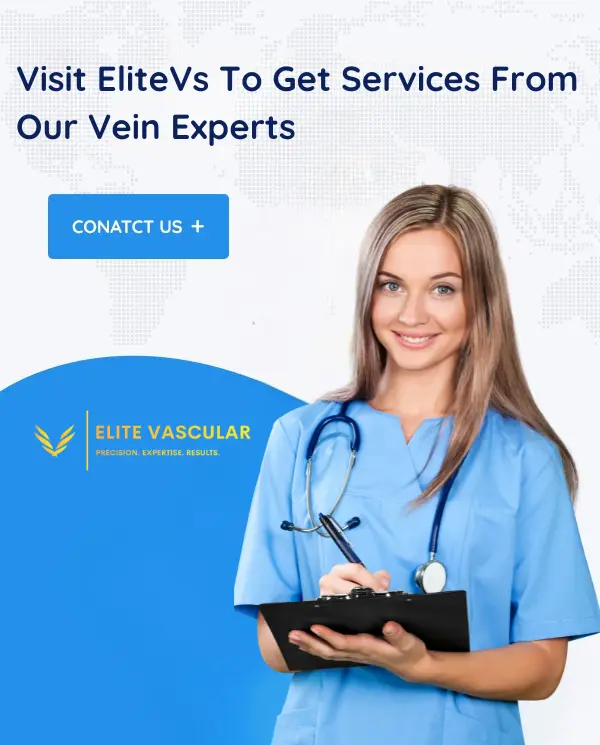
Why does varicose vein bleeding occur?
Varicose veins can lead to bleeding for several reasons. Localized trauma or skin damage is a common cause of bleeding from varicose veins. Body injury on the vein can lead to bleeding. It’s amazingly straightening to hurt the skin surface veins. Some conditions that cause vein damage and external bleeding include:
- Striking leg against the dishwasher
- Vein scratching by accident
- Furniture or other items hit the leg
- Dog/animal scratch
- Trip-and-fall injuries, grazing skin
Varicose veins can be caused by weakening and deforming skin covering veins. The skin above the vein can be very thin and delicate. When this happens, the chances of intuitive vein bursts and external bleeding increases.
The increased pressure inside the veins is another risk factor of bleeding. High venous pressure often arises from underlying venous issues affecting nearby veins. The primary reason is venous reflux, sometimes called venous insufficiency.
What to do if bleeding occurs?
Pressure the bleeding varicose vein and get immediate help. The bleeding from the varicose vein often stops after putting direct pressure for a few minutes. Sometimes, long periods of direct pressure may be necessary. Put direct pressure on the bleeding vein using your thumb or fingers. Another important solution is to lift the foot above the heart level. This will reduce the impact of gravity on the veins.
What Causes Varicose Veins in the Legs to Bleed?
Venous insufficiency causes leg bleeding. This problem arises when the veins are unable to convert blood to the heart effectively due to a weak or damaged valve. Veins can burst due to accumulated pressure. Varicose veins can weaken skin walls over time, which affecting the veins appear more on the surface. Sometimes, slight injury or scratch can cause excessive blood loss. Although bleeding is often painless, some people may have adequate blood loss that endangers their overall health.
Symptoms of Bleeding Varicose Veins
A bleeding vein isn’t always immediately noticeable. Patients may see blood on their clothing or mattress without recognizing it. In other cases, the bleeding is more apparent, with blood visibly flowing from a vein.
Common symptoms of varicose veins bleeding include:
- Swelling, pain, and warmth around the affected vein
- Dark red or purple discoloration on the skin
- Blood-soaked clothing or bedding
- Increased pain or discomfort in the affected area
Immediately seek medical assistance if you suspect a varicose vein bleed. For elderly persons with sensitive skin, blood thinner users, and pregnant women, bleeding varicose veins are risky.
How Is Bleeding in the Legs Treated?
When it comes to the treatment of leg veins and varicose veins, patients have lots of options in EliteVs. The fastest and simple way to stop bleeding is to put pressure lifting the affected area or foot up. Stitches to prevent bleeding in immediate care or emergency facilities are a normal process. But since the skin is very delicate at the beginning, this treatment can make the process more difficult. Another option to prevent further bleeding is to close vessels using surface laser. Veins shrink due to high temperature generated by the laser. Typically, these steps may be completed quickly.
Prevention of Bleeding Varicose Veins
To reduce the likelihood of developing bleeding from varicose veins or experience, you can take several preventive measures.
- Maintain a healthy weight to lower vascular pressure
- Exercise frequently to boost circulation
- Avoid lengthy periods of standing or sitting and switch positions often
- Compression stockings strengthen veins and prevent blood pooling
- Elevate your legs while resting to improve blood flow
In addition to all of the different things, it’s crucial to test a physician for varicose veins at regular intervals. Timely diagnosis and treatment are essential to prevent complications together with bleeding from varicose veins and bad vascular health.
Treatment for Bleeding Varicose Veins
When you come to EliteVs vein clinic with a varicose vein bleed, our expert team will prevent the bleeding, compare your condition, and determine the most effective path of movement. Some of our less invasive varicose vein treatments are:
- Endovenous thermal ablation: Ultrasound imaging guides a tiny catheter into a vein for endovenous thermal ablation. Once implanted, the catheter transfers heat energy into the veins inner walls, which compress and close. The body absorbs the treated vein, sending blood to healthy veins.
- Ambulatory phlebectomy: Small incisions near the vein are used in ambulatory phlebectomy. A surgeon uses advanced medical equipment to remove varicose veins via these inches.
- Sclerotherapy: A sclerosant solution is injected directly into the vein during sclerotherapy. Sclerosent causes vein collapse and stoppage by irritating its inner layer. The body immediately integrates the treated vein and redirects blood flow.
- Non-thermal vein ablation: Non-thermal vein ablation is a newer alternative to thermal ablation. Instead of heat, these therapies seal injured veins using adhesives or drugs.
Ask the experts how to prevent varicose vein bleeding
Want to get rid of all vein issues, feel free to ask our board certified vein specialist Nirman Tulsyan. Visit our site to book an appointment or call us at 973-975-4447.
